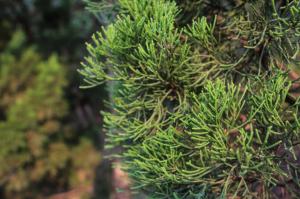What Does it Mean When Tomato Plant Leaves Turn Yellow?
Tomato plants are a popular and valuable crop for both commercial and backyard gardeners. They are relatively easy to grow, but like all plants, they can experience problems. One of the most common problems that tomato plants face is yellowing of their leaves. Yellowing leaves can be a sign of various issues, ranging from minor soil deficiencies to severe diseases that can affect the entire plant. Understanding the reasons for tomato plant leaves turning yellow is essential for taking appropriate remedial measures and ensuring a healthy crop.
Causes of Yellowing Leaves in Tomato Plants
There are many reasons why tomato plants may develop yellow leaves, some of which are natural and some which can be prevented or treated with proper care:
1. Nutrient Deficiencies:
Yellowing leaves can often indicate a deficiency of essential nutrients like nitrogen, magnesium, or iron in the soil. This can happen when the soil is not well-balanced and lacks the necessary nutrients required by the tomato plant. Nutrient deficiencies can be corrected by adding fertilizer to the soil or using organic soil amendments to provide additional nutrients.
2. Overwatering / Underwatering:
Both overwatering and underwatering can cause tomato leaves to turn yellow. Too much water can lead to root rot, which can stress the plant and cause leaves to turn yellow. On the other hand, too little water can cause wilting and yellowing of leaves. Proper watering is crucial to keep tomato plants healthy and thriving.
3. Pests and Diseases:
Pests like aphids, spider mites, and whiteflies and diseases like Fusarium and Verticillium wilt can cause yellowing of tomato plant leaves. Pests can damage the foliage and seedlings, decreasing the plant's ability to absorb nutrients, leading to yellowing, and drooping of leaves. Diseases can also affect leaves, causing them to wilt and turn yellow. Infested and diseased plants must be treated early to avoid the spread.
4. Sunscald:
Direct sunlight exposure can be harmful to tomato plants, especially if they are water-stressed. This often results in sunscald or yellowing of the leaves. Ensure that tomato plants have access to at least 6 hours of sunlight daily, and try to protect them from harsh afternoon rays during hot summers.
Preventive and Treatment Measures
Regardless of the reason for the yellowing of tomato plant leaves, there are preventive and treatment measures that gardeners can take:
1. Adjust Soil pH:
Testing soil pH and taking remedial measures to adjust it is essential for the healthy growth of tomato plants. Tomatoes do well in slightly acidic soil with a pH between 6.0 and 6.8. Adjusting soil pH can help ensure nutrient availability, healthy plant growth, and prevent yellowing of leaves.
2. Proper Watering:
Proper watering is essential to avoid the yellowing of tomato leaves. Ensure that the soil is moist but not too wet or too dry. Water tomato plants deeply and consistently, avoiding waterlogging that could lead to yellow leaves.
3. Organic Soil Amendments:
Organic soil amendments can be used to give tomato plants a nutrient boost. Compost, bone meal, manure, and other organic fertilizers can improve the soil structure and add essential nutrients. Using organic soil amendments can help prevent yellowing of tomato leaves due to nutrient deficiency.
4. Use of Pesticides:
If pests are causing the yellowing of tomato plant leaves, use eco-friendly pesticides or neem oil to control and stop the pest infestation from spreading. It is also essential to clear away any debris, dead leaves, and fallen fruits from around the plants, as these can serve as hiding places for pests to breed.
5. Disease Prevention:
Preventative measures like crop rotation, using disease-resistant cultivars, and destroying infected plants can help prevent the spread of diseases that cause yellowing of tomato leaves. Keeping the garden clean and well-maintained also helps prevent disease outbreaks.
Conclusion
Tomato plants are an essential part of many gardeners' crops. Yellowing of tomato plant leaves can significantly affect the health and growth of the crop. Understanding the possible causes and remedial measures is necessary for ensuring a healthy and bountiful tomato harvest. By providing the proper care and attention, gardeners can prevent yellowing of tomato leaves and ensure the plants stay healthy and productive.

 how many times do yo...
how many times do yo... how many planted tre...
how many planted tre... how many pine trees ...
how many pine trees ... how many pecan trees...
how many pecan trees... how many plants comp...
how many plants comp... how many plants can ...
how many plants can ... how many plants and ...
how many plants and ... how many pepper plan...
how many pepper plan...





























